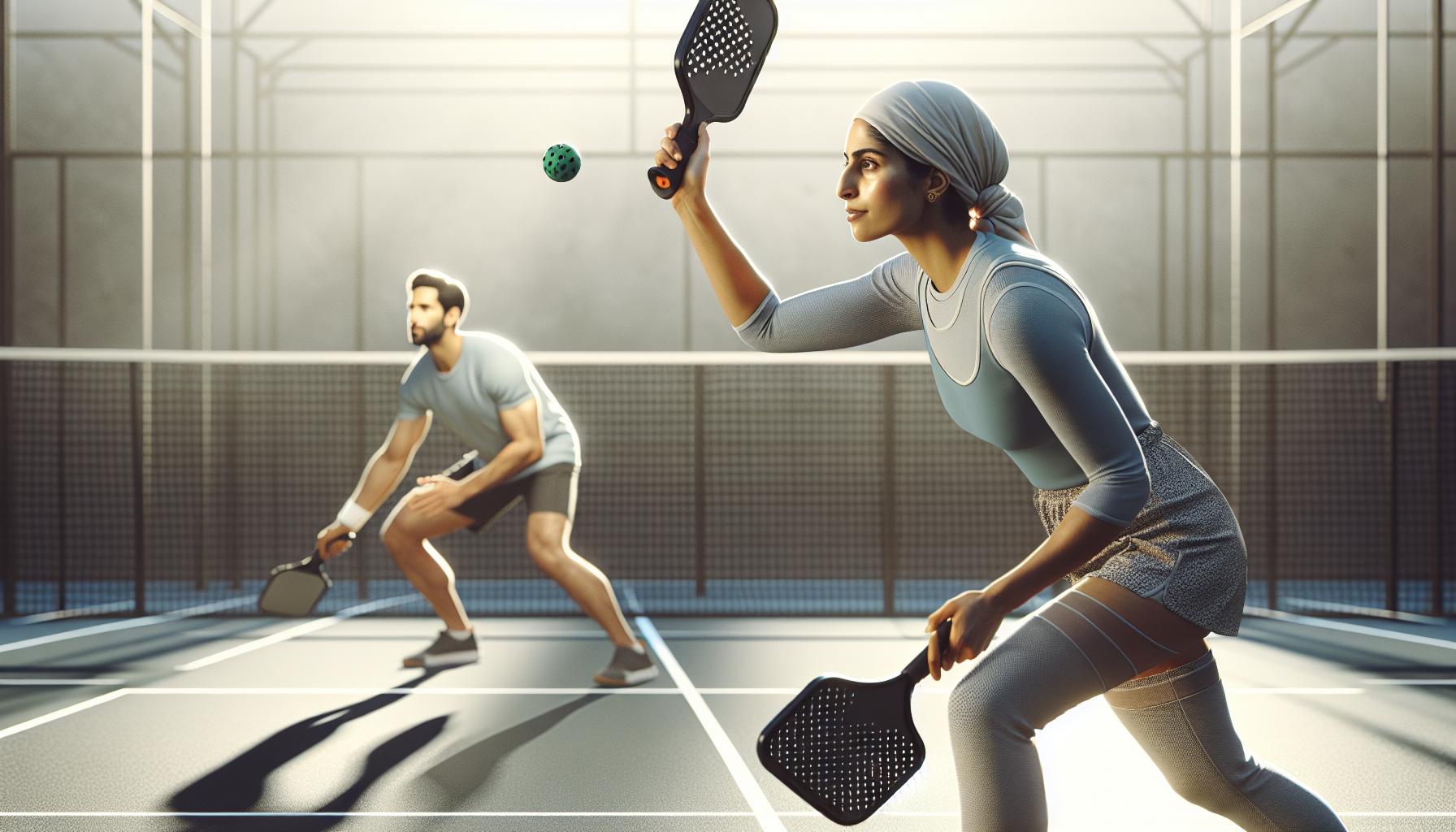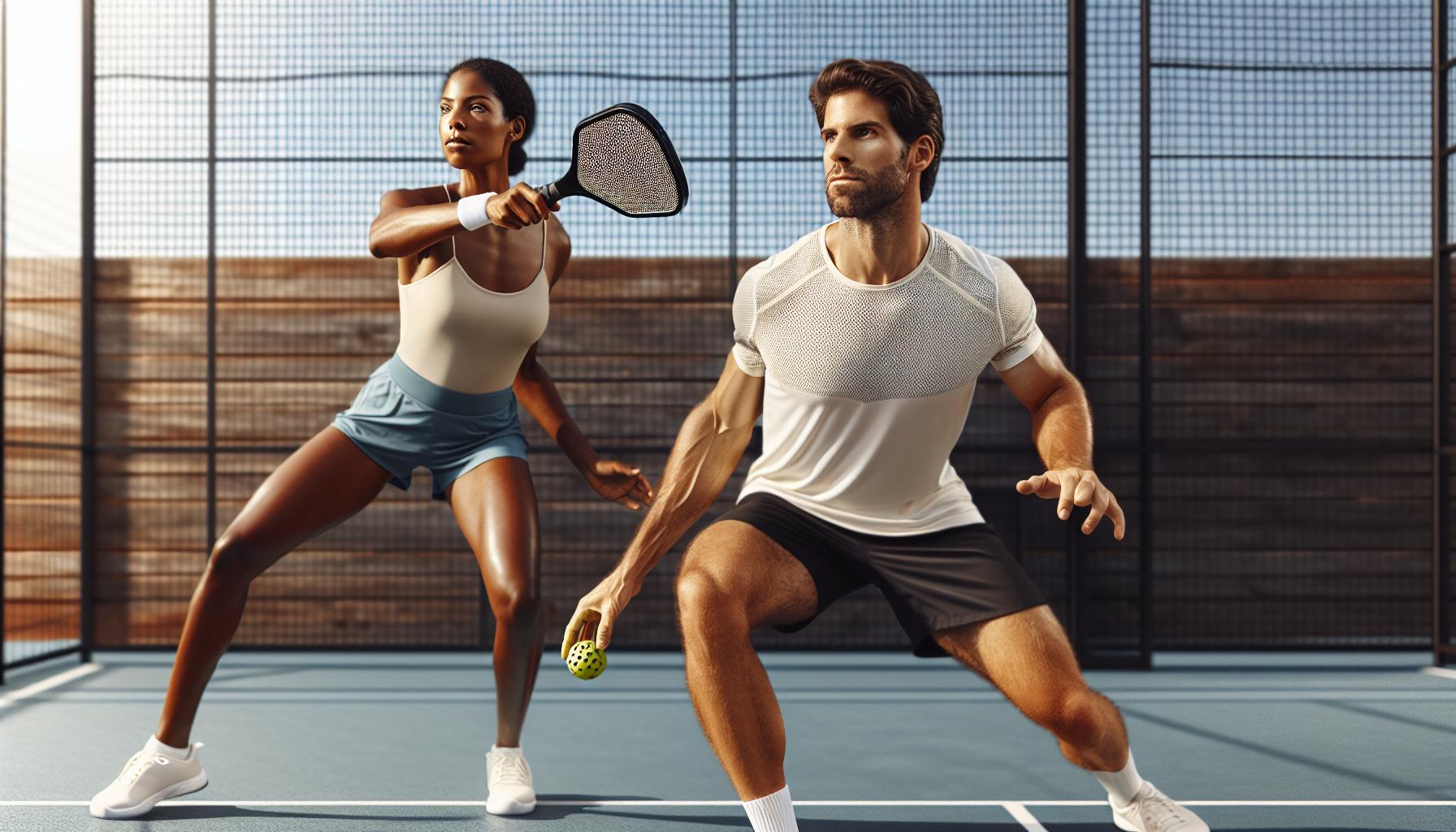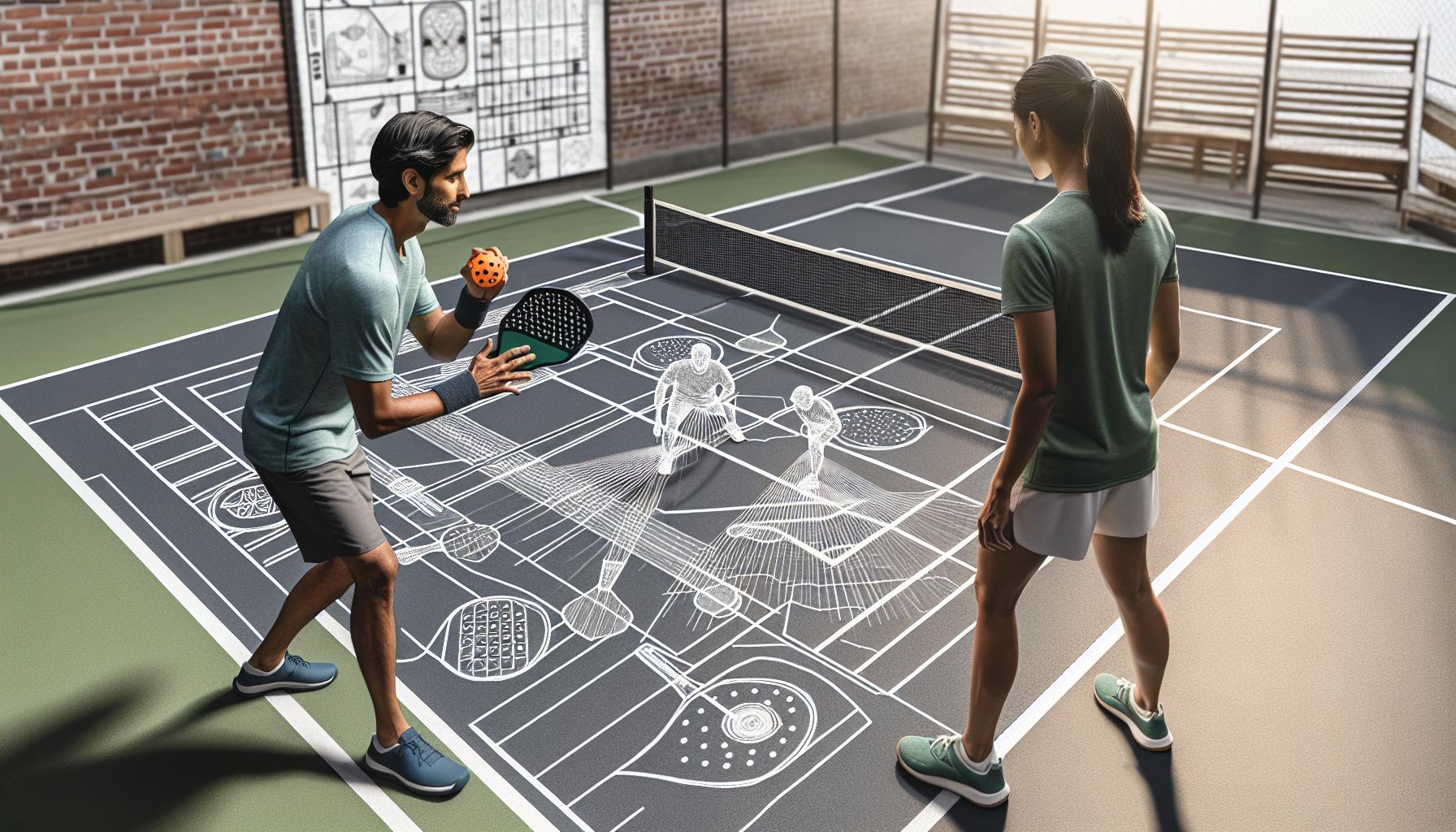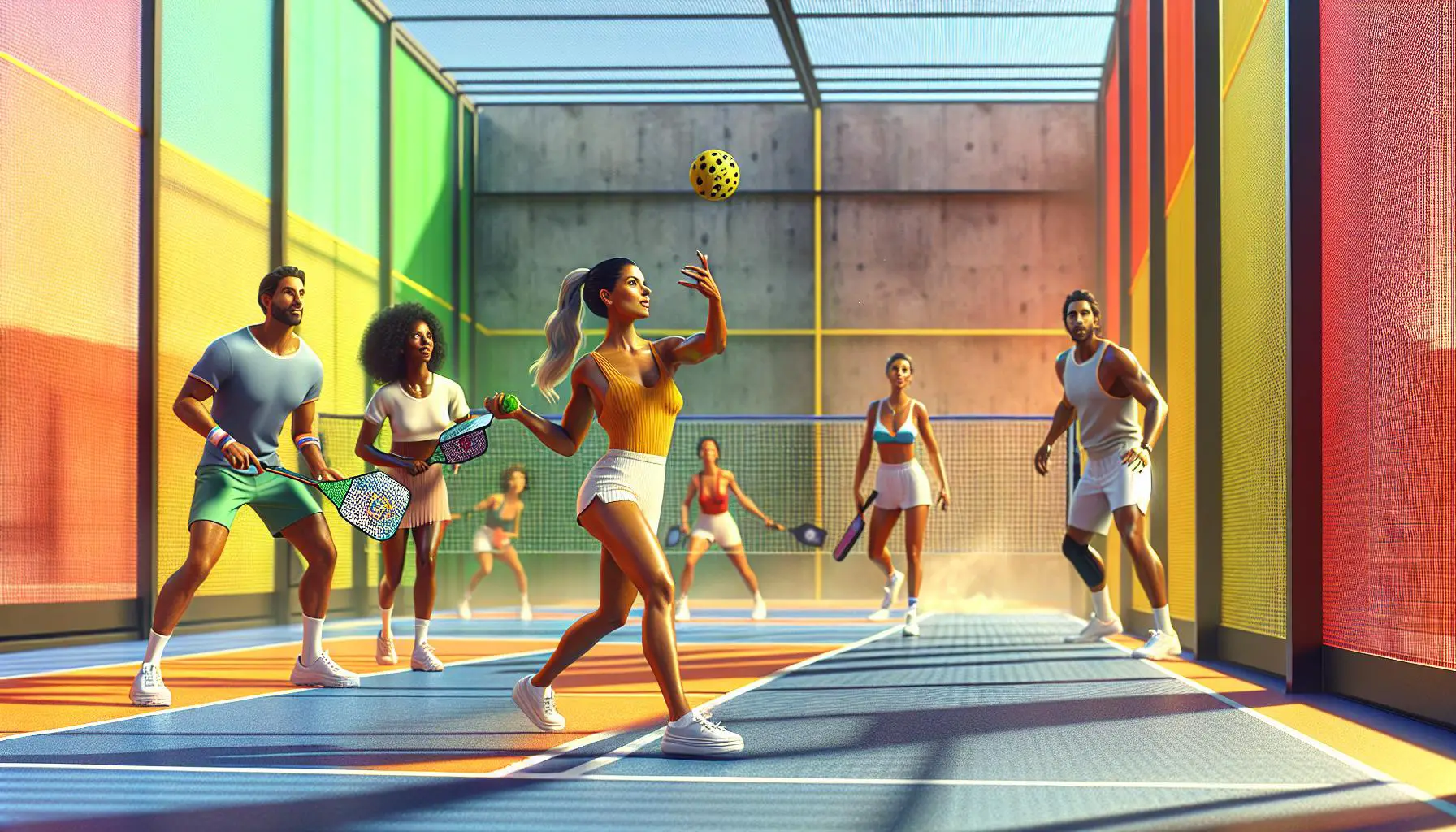Pickleball’s popularity is soaring, and doubles play is where the action really heats up. But before you hit the court with your partner, there’s a crucial aspect of the game you’ll need to master: the serving sequence. It might sound simple, but there’s more to it than meets the eye.
Understanding the serving rules in doubles pickleball isn’t just about keeping the game fair; it’s about strategizing and setting your team up for success. Whether you’re new to the sport or looking to refine your knowledge, getting a grip on the serve sequence can give you and your partner a competitive edge. Let’s dive into the essentials of serving in doubles pickleball and why it’s a game-changer.
Importance of Mastering the Serving Sequence in Doubles Pickleball
In doubles pickleball, the serving sequence isn’t just a rule to follow; it’s a strategic element that can dictate the flow of the game. Teams that have a good grasp of how serving works can use this knowledge to their advantage, setting the stage for victory. Here’s why mastering the serving sequence in doubles pickleball is absolutely vital.
Firstly, understanding the serving sequence allows teams to plan their moves with precision. Since only the serving side can score points, knowing who serves next and from which position can help teams strategize effectively. This doesn’t just apply to the serving team; the receiving team also benefits from this knowledge, as they can predict the play and position themselves accordingly.
Secondly, the sequence impacts player confidence. Players who are unsure of the serving order may hesitate, leading to errors or missed opportunities. In contrast, teams that are confident in their understanding of the serving sequence can play more fluidly and assertively. This psychological edge can be just as important as physical skill in a closely matched game.
Here are a few key rules that underline the importance of the serving sequence in doubles pickleball:
- The starting server’s position changes after the first service fault. Initially, the team’s first serve is made from the right-hand court. If a fault occurs, the serve passes to the other team. However, on subsequent serves, players serve from the side that corresponds to their score being even or odd.
- Both team members serve and receive serves. This means that both players must be ready and in position to serve or receive, emphasizing the need for coordination and communication.
- A point is scored only when the serving team wins the rally. Consequently, serving is not just a way to start the rally but a critical opportunity to score points and gain a lead.
Teams must also keep track of the “two-bounce rule,” which requires the ball to bounce once on each side before volleys can begin. This rule adds an extra layer of strategy to the serve and the return, making the understanding of serving order even more crucial.
Official Rules for Serving in Doubles Pickleball

In doubles pickleball, serving isn’t just about getting the ball across the net; it’s a technique-laden component that can set teams up for success or failure. The Official Pickleball Rulebook outlines several key rules that govern the serving sequence, emphasizing its importance in the game’s structure and strategy.
The basic premise is straightforward: each player on a doubles team will have the opportunity to serve until a fault is committed, at which point the serve transitions to the opposing team. However, the initial serve of the game is an exception where only one partner gets the chance to serve before the ball is handed over to the opponents. This peculiar rule adds a layer of strategy from the very beginning of the game.
One of the core rules involves the position of the server and the receiver. The server must stand behind the baseline, between the centerline and the sideline, without stepping on the court until after striking the ball. The receiving team must also adhere to positioning rules, standing on the side opposite the server. This positioning rule ensures fair play and sets a structured environment for the serve to take place.
Serve Sequence and Rotation is another crucial aspect outlined. In doubles pickleball, the serving sequence rotates in a specific order throughout the match. Initially, players must decide who will serve first for their team. As play progresses, if a point is scored, the server moves to the opposite side of their serving area and continues to serve until a fault occurs. After both team members have served and faults have occurred, the serve moves to the opposing team, where the sequence repeats. This rotation is vital for maintaining the game’s pace and fairness.
Additionally, the Two-Bounce Rule plays a significant role in serving and receiving in doubles pickleball. After the serve, the ball must bounce once before the receiving team can return it, and then it must again bounce before the serving team can hit it back. This rule adds an extra layer of strategy and skill to the serving and receiving phases of the game, emphasizing the importance of precision and planning.
The serving sequence and rules in doubles pickleball not only dictate the game’s flow but also provide teams with opportunities to strategize and outmaneuver their opponents. Mastering the serve, understanding its rules, and utilizing it strategically can significantly impact a team’s performance and overall success in the game.
Types of Serves Allowed in Doubles Pickleball

In doubles pickleball, the serve is the initial play that kicks off the rally, and mastering it can give a team a significant advantage. Understanding the types of serves allowed is crucial for players who wish to elevate their game. Though the rules are straightforward, the variety in serving techniques allows for creative and strategic play.
The Traditional Serve
The most common and arguably the foundation of all pickleball serves is the traditional underhand serve. This serve requires the player to hit the ball in an upward arc, ensuring the paddle makes contact with the ball below waist level. It’s a simple yet effective start to the game, offering beginners an easy way to get into play. However, even seasoned players stick with the traditional serve due to its reliability and the control it offers over the ball’s placement.
The Drop Serve
Introduced as a provisional rule but now a permanent part of the game, the drop serve offers players a different serving technique. In this method, players are allowed to let the ball drop to the ground naturally, without the need to bounce it. Once it touches the ground, they can hit the ball to serve. This method provides a unique advantage as it removes the necessity for the ball to be hit in an upward arc, allowing for a variety of serve styles and trajectories.
The Power Serve
For players looking to add some speed and intimidation to their serve, the power serve is the way to go. Although it’s a riskier approach due to the increased chance of faults, a well-executed power serve can catch opponents off guard, potentially earning the serving team an easy point. The key to a successful power serve lies in a combination of strength, timing, and precision.
The Spin Serve
Adding spin to a serve can significantly alter its trajectory and bounce, making it harder for opponents to predict and return the serve. The spin serve takes advantage of the paddle’s textured surface, allowing skilled players to manipulate the ball’s movement. Spin serves can be challenging to master but are incredibly effective in disrupting an opponent’s rhythm.
Strategies for Effective Serving in Doubles Pickleball

Mastering the serve in doubles pickleball can significantly impact the game’s dynamics. Effective serving strategies go beyond merely getting the ball into play; they set the tone for the point and can shift the momentum in a team’s favor.
Serve Placement is Key: One of the most effective strategies is precise serve placement. Serving deep in the court forces the receiving team to hit upwards, giving the serving team an advantageous position closer to the net. Conversely, a short serve can catch opponents off-guard, disrupting their positioning and potentially leading to an easier point for the serving team.
Mix it Up: Variation in serves keeps opponents guessing and can reduce their ability to predict and prepare for the serve. Alternating between different types of serves, such as the underhand serve, drop serve, power serve, and spin serve, can prevent the receiving team from getting comfortable or establishing a rhythm. This unpredictability makes it harder for opponents to formulate a consistent response.
Communication and Coordination: In doubles pickleball, communication and coordination between partners are crucial, especially when serving. Discussing serve strategies before the game and signaling intentions subtly can ensure both partners are on the same page, reducing the risk of unforced errors and maximizing the effectiveness of serves.
Take Advantage of Weaknesses: Observing the receiving team’s movements and tendencies can provide valuable insights into their weaknesses. For instance, if an opponent struggles with high bouncing balls, incorporating more power serves could be advantageous. Similarly, if an opponent has difficulty with serves to their backhand, targeting that area could yield positive results. Adapting serve strategies based on these observations can give the serving team a competitive edge.
Practice Makes Perfect: Finally, the effectiveness of any serving strategy is contingent upon practice and execution. Regularly practicing different types of serves and serve placement ensures that these strategies can be confidently implemented during a game. It’s also important for both partners to practice serving under pressure to mimic game-like conditions, enhancing their ability to perform well during actual matches.
Effective serving in doubles pickleball isn’t just about getting the ball over the net; it’s about strategic placement, variation, and teamwork. By mastering these aspects, players can significantly enhance their serve effectiveness, making it a powerful weapon in their game arsenal.
Common Mistakes to Avoid in the Serving Sequence

In doubles pickleball, the serving sequence is fundamental to the game’s flow. It might seem straightforward, but common mistakes can disrupt the rhythm and result in lost points or even games. By identifying and avoiding these errors, teams can maintain momentum and keep the pressure on their opponents.
Firstly, a prevalent mistake is losing track of the serving order. Unlike singles play, doubles requires players to alternate serves after each point is scored. This can create confusion, especially in the heat of the match. One effective strategy to remember the serving order is for partners to communicate constantly and confirm who is serving next before the current rally ends.
Another error is foot faults. These occur when a player’s foot enters the wrong service area or touches the baseline during the serve. It’s an easy mistake to make but equally easy to avoid with practice and awareness. Players should focus on their positioning and take a moment to ensure they’re in the correct spot before serving.
Improper service techniques also lead to faults. Players sometimes serve out of turn or perform an illegal serve. An illegal serve could be anything from not meeting the ball below the waist to not maintaining a visible paddle and ball at the serve’s beginning. Familiarizing oneself with the official rules and practicing the correct serving form are vital steps to eliminating these errors.
Not adapting to the receiving team’s positioning is another common oversight. Teams often fall into a routine with their serve, failing to notice how their opponents are positioning themselves. Observing and adjusting the serve based on the receivers’ arrangement can significantly improve serve effectiveness and reduce the chances of serving directly into an opponent’s strength.
Lastly, underestimating the importance of the second server is a mistake teams sometimes make. When the first server loses the serve, the responsibility shifts to the second server. This switch can be a critical moment in the game, yet some teams don’t give it the attention it deserves. The second server should be prepared to capitalize on this opportunity by serving strategically to maintain the team’s advantage.
Conclusion
Mastering the serving sequence in doubles pickleball isn’t just about following the rules. It’s about turning those rules into a strategic advantage. By steering clear of common mistakes and focusing on precision, teams can keep the momentum on their side. Remember, every serve is an opportunity to set the tone for the game. So, keep practicing, stay mindful of your serving order and technique, and watch how these efforts pay off on the court. Happy playing!














0 Comments